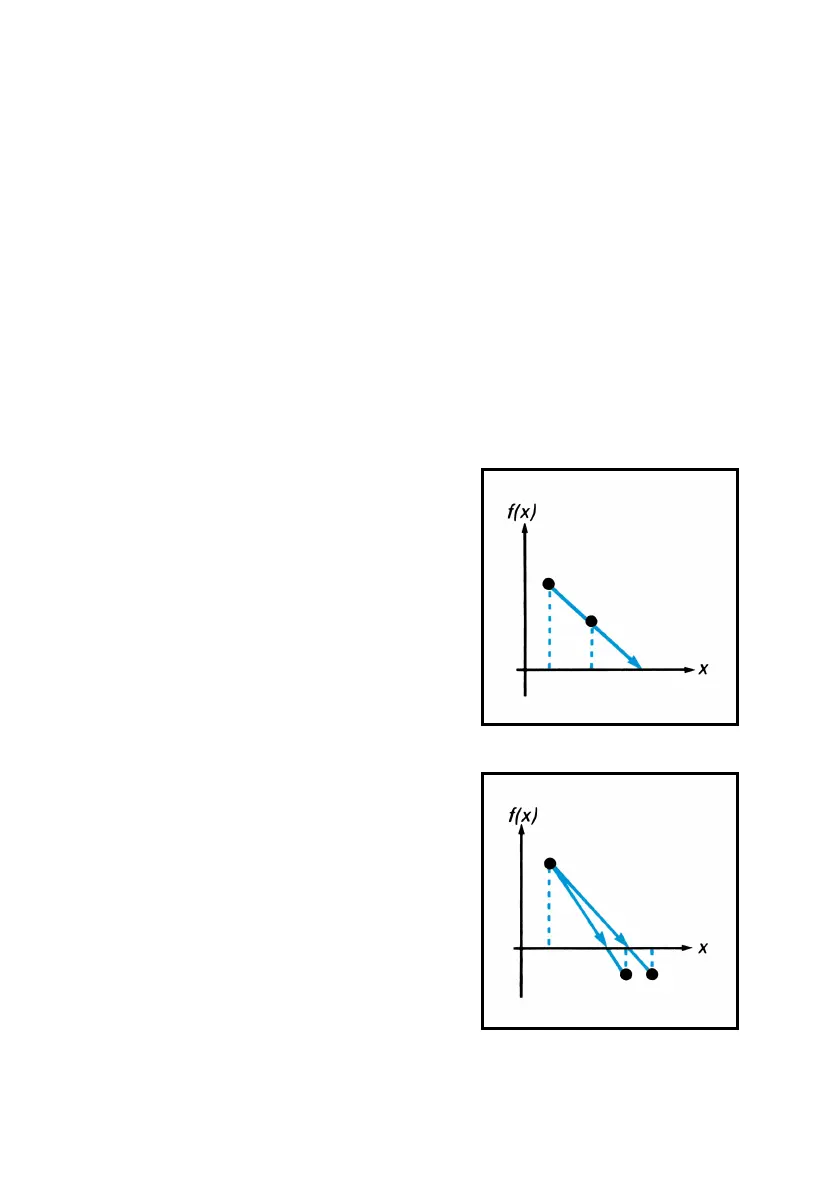220
Appendix D
A Detailed Look at _
Section 13, Finding the Roots of an Equation, includes the basic
information needed for the effective use of the _ algorithm. This
appendix presents more advanced, supplemental considerations
regarding _.
How _ Works
You will be able to use _ most effectively by having a basic
understanding of how the algorithm works.
In the process of searching for a zero of the
specified function, the algorithm uses the
value of the function at two or three
previous estimates to approximate the
shape of the function’s graph. The
algorithm uses this shape to intelligently
“predict” a new estimate where the graph
might cross the x-axis. The function
subroutine is then executed, computing the
value of the function at the new estimate.
This procedure is performed repeatedly by the _ algorithm.
If any two estimates yield function values
with opposite signs, the algorithm
presumes that the function’s graph must
cross the x-axis in at least one place in the
interval between these estimates. The
interval is systematically narrowed until a
root of the equation is found.
A root is successfully found either if the
computed function value is equal to zero or
if two estimates, differing by one unit in
their last significant digit, give function values having opposite signs. In
this case, execution stops and the estimate is displayed.

